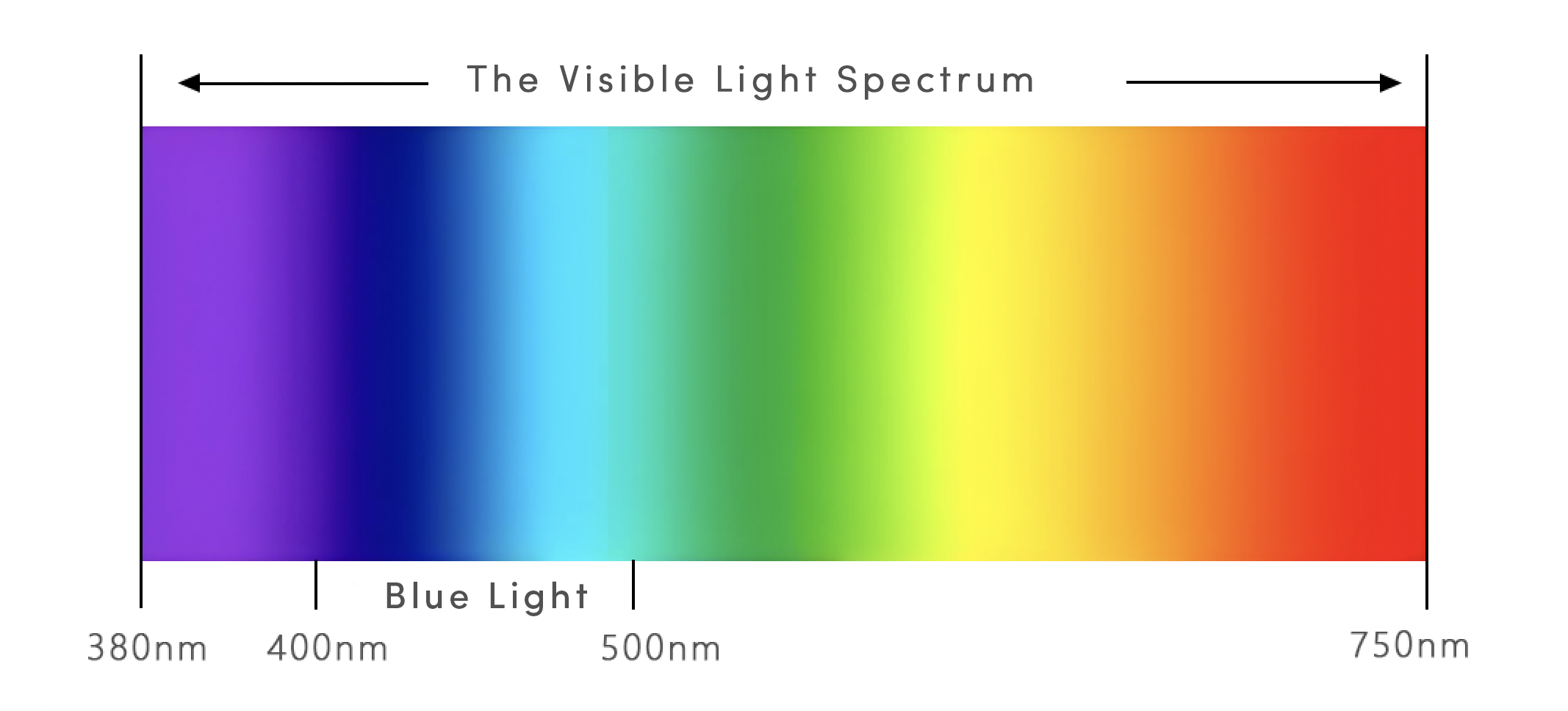With the continuous advancement of technology, our lives have become inseparable from various electronic devices such as smartphones, computers, and televisions. While these devices bring convenience to our daily lives, they also inevitably introduce potential issues related to blue light exposure. Prolonged exposure to blue light can lead to eye strain, decreased vision, and even disrupt sleep patterns.
As a result, the demand for blue light protection has gradually become an integral part of modern life.
What is Blue Light, and Why Should We Protect Against It?
Our vision relies on light, but what we perceive as white light is actually a combination of different colors, including red, yellow, and blue.
-
Red light: Wavelength range of approximately 620–760 nm
-
Yellow light: Wavelength range of approximately 570–590 nm
-
Blue light: Wavelength range of approximately 400–500 nm
Among these, short-wave blue light (closer to 400 nm) carries higher energy and can contribute to chronic photic damage to the retina.

Where Does Blue Light Come From?
Blue light is everywhere, emitted naturally by the sun and artificially by electronic devices such as computers, smartphones, TVs, and LED lighting.
Why Is Blue Light a Concern?
Research has shown that exposure to blue light with a peak spectrum of 460–500 nm at an illuminance above 1,500 lux for more than three hours can significantly reduce retinal cell vitality and increase apoptosis (cell death).
While typical home environments may not reach these conditions, prolonged exposure to screens can still lead to visual fatigue, eye strain, and potential retinal damage. Staring at screens for extended periods without proper eye care may increase the risk of long-term vision issues.
Principles Behind Mainstream Blue Light Protection Products
To effectively reduce the harm caused by blue light, products designed to protect against it have emerged. The core principle of blue light protection technology is to absorb or filter out harmful blue light components, reducing the amount of blue light entering the eyes and protecting them from excessive blue light radiation. There are generally two approaches used by mainstream blue light protection products—
-
Absorbing Blue Light: Certain materials are selected to absorb specific wavelengths of blue light, reducing its energy and intensity to minimize harm to the eyes. Anti-blue light glasses work on this principle, but they often come with "comfort" challenges. Many anti-blue light glasses, while effective at filtering blue light, tend to distort colors, often giving the lenses a yellow or orange tint, which can affect the authenticity of visual perception and cause color distortion.

-
Filtering Blue Light: Optical materials that reflect or filter specific bands of blue light are used to reduce its penetration, protecting the eyes from irritation. Many electronic devices now come equipped with software-based light-filtering modes (e.g., night mode), which can block some blue light. However, their protective range and effectiveness are often limited. This fixed-mode approach cannot address complex lighting environments across the full spectrum, and the filtered effects may not always be uniform, potentially causing eye fatigue.

Could Black Electrochromic (EC) Materials Be the Future of Blue Light Protection?
Ambilight’s black EC material offers advanced blue light protection, making it a promising solution for eye health and visual comfort.
Full-Spectrum Absorption: The Power of Black
Black materials are known for their superior absorption capabilities across the entire visible spectrum. This means they can effectively absorb blue light from electronic screens while also mitigating exposure to other potentially harmful wavelengths.
EC Smart Dimming: Adapting to Different Lighting Needs
Beyond blue light protection, EC materials feature dynamic dimming. Ambilight’s black EC smart dimming technology is already being used in mass-produced automotive sunroofs, allowing users to adjust light transmittance based on sunlight intensity or personal preference.

Future Applications: Expanding Beyond Automotive Use
The potential applications of black EC materials extend far beyond vehicles. In the future, we could see:
-
EC smart dimming glasses that adjust light transmittance based on screen brightness or indoor lighting, providing optimal eye protection.
-
Architectural applications, such as smart windows and office partitions, that modulate blue light levels in real time, reducing cumulative eye strain from indirect reflections.
By combining adaptive light control with full-spectrum absorption, black EC materials could redefine blue light protection across multiple industries, enhancing both visual comfort and eye health.
In today’s fast-paced world, we cannot completely avoid exposure to blue light. Ambilight aims to leverage technological advancements to reduce its harmful effects on the eyes. The emergence of black EC dimming materials provides a novel solution for blue light protection. It not only effectively filters blue light but also shields the eyes from other harmful light sources, offering a more comfortable and healthier visual experience.